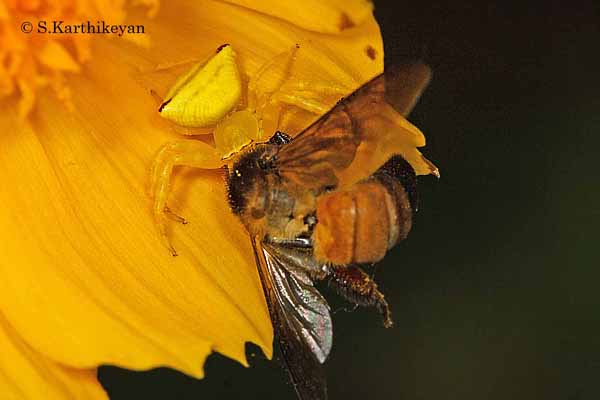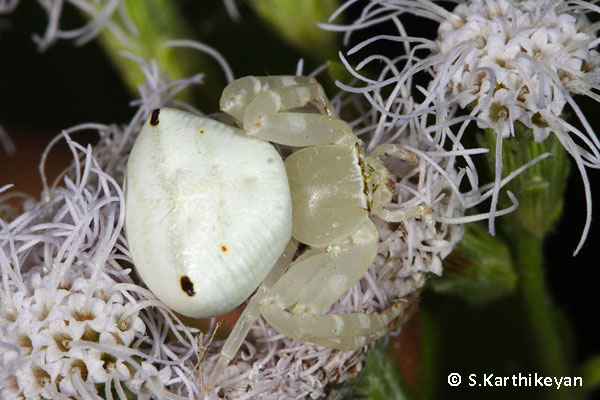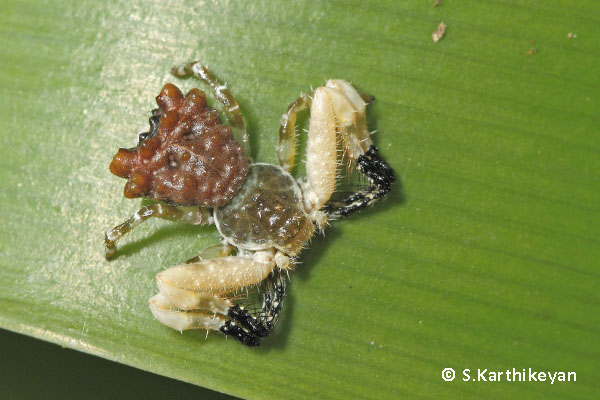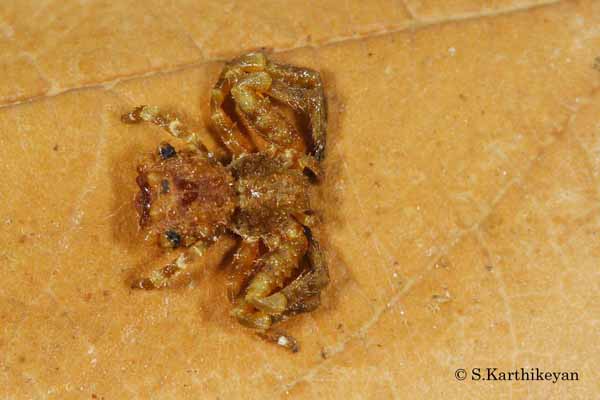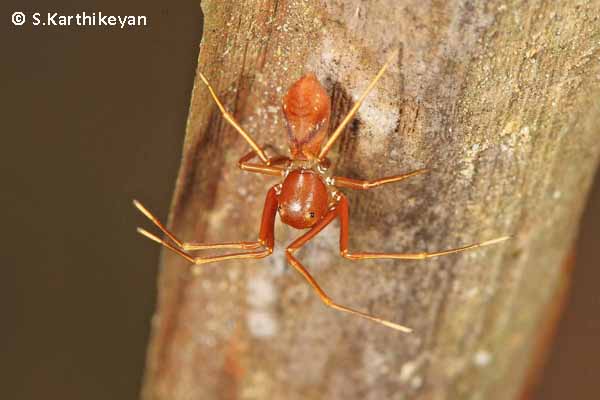Bees are very active insects as we all are aware. Be it while on their hive or when they are visiting a flower, they are abuzz with activity. However, on one occasion, I saw a bee sitting on a flower for a protracted period of time without signs of any activity. This inactivity on part of the bee was very intriguing to me. When I got close, I realised why. The bee had become a victim of a beautifully camouflaged Crab Spider. This is how many of us have perhaps seen our first crab spider.
Crab Spiders are a large and interesting family of spiders. There are over 2000 species world over belonging to the family Thomisidae. Their resemblance and behaviour to crabs is quite pronounced in many while not so in some others. The first 2 pairs of legs are very well developed in all crab spiders. They hold these legs in a manner that is very characteristic of Crab spiders. Their movement is also reminiscent of crabs – they can move sideways and backwards too.
Being such a diverse group it is only natural to expect them to occupy a variety of habitats with ample variation in their lifestyles. Among crab spiders one can find those that live on the ground, and those that live on plants (grass, bark, leaf, and flower). And, depending on where they live, they exhibit an interesting array of adaptations suitable for their survival.
Crab spiders, like all other spiders, can produce silk. But they do not build webs for the purpose of catching prey; they instead rely on camouflage and stealth.
While some, as we have seen, hide in flowers and take on the colour of the flower, others merge with their backgrounds. There are still others which have taken this to another level altogether – they resemble objects in their environment.
I have seen several species of crab spiders to date. However, the most fascinating of them all are the ones I witnessed while on a trail at the Kabini River Lodge and another at the River Tern Lodge, Bhadra. It so happens that both of them were Bird-dropping Crab Spiders. They sat with their legs pulled in, looking like a lump; their warty appearance enhancing their resemblance to a bird-dropping. It is thought that they make a meal of flies and other insects that may get attracted to a “bird-dropping”.
The one from River Tern Lodge was coloured with various shades of brown.
In the more recent sighting of one at Kabini, the spider slowly crawled from under the leaf to the upper surface of the leaf. This was largely similar to the previous one but with legs coloured black and white, reinforcing the “bird-dropping” effect.
However, the one that I happened to see during a visit to Coorg completely took me by surprise. It turned out to be an Ant-mimic Crab Spider! I had only seen Ant-mimic spiders earlier, all of which were jumping spiders.
Crab spiders occur in a variety of environs. Wherever they are found, they quietly control populations of other little creatures. So, try and encourage them to be part of your garden to begin with – it may be well worth the effort!
If you have already done so, the next time you stroll through the garden make sure that you look carefully at the flowers. For all you know you may see a beautiful little crab spider lurking amid the blossoms. More crab spider pics.
